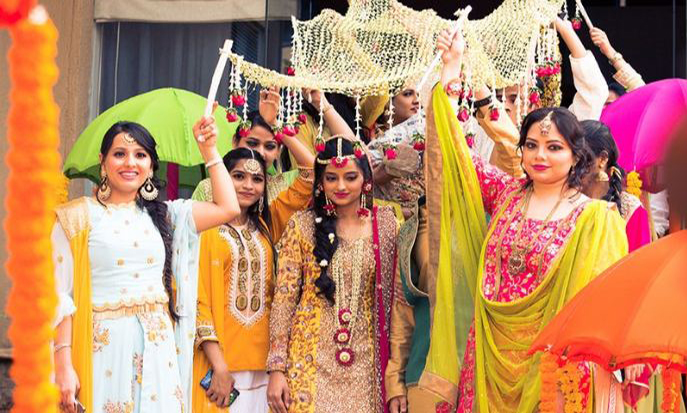By Dr Abhishek Atrey
Recently, the Punjab and Haryana High Court in Gulam Deen vs State of Punjab gave protection to a Muslim married couple—a girl who was 16, and a man who was 36. However, the National Commission for Protection of Child Rights (NCPCR) filed a Special Leave Petition against this order. Following this, the Supreme Court issued a notice to examine the question of law relating to the age of girls marrying under Muslim law, which is in conflict with several other laws in India.
This order of the Supreme Court restarted the age-old controversy regarding protection of children from sexual offences. The High Court in this matter relied on three of its judgments and Article 195 from the book “Principles of Mohammedan Law” by Sir Dinshah Fardunji Mulla. According to the Article, Muslims of sound mind who have attained puberty may enter into a contract of marriage and puberty is presumed on completion of 15 years of age. Even lunatics and minors who have not attained puberty may be validly contracted in marriage by their respective guardians. But according to Section 5 of the Hindu Marriage Act, 1955, Section 4 of the Special Marriage Act, 1954, and Section 60 of the Indian Christian Marriage Act, 1872, the minimum age of marriage of a girl is 18 years and of a boy, 21 years.
While sexual intercourse is a basic ingredient of the institution of marriage in any religion, Section 375 of the IPC says that any kind of sexual intercourse, with or without consent, with a girl under 18 is rape. However, Exception 2 of Section 375 kept out sexual intercourse or sexual act by a man with his wife above 15 years of age from the definition of rape. But this was struck down by the Supreme Court in Independent Thought vs Union of India, (2017) by holding that this was in violation of Article 14, 15 and 21 and in contravention of POCSO Act, 2012 and Juvenile Justice (Care and Protection of Children) Act, 2015.
In 2006, the Parliament enacted the Prohibition of Child Marriage Act, 2006, after repealing the Child Marriage Restraint Act, 1929. Under this Act, marriage of a girl below 18 and a boy below 21 is prohibited and voidable and solemnisation or even abatement to solemnise such marriages are punishable offences. This Act of 2006 is applicable to all citizens of India.
In 1992, the UN General Assembly adopted the Conventions on the Rights of the Child, which prescribed standards to be followed by all participating States. India acceded to this Convention on December 11, 1992. In furtherance of this Convention, the Parliament enacted the Protection of Children from Sexual Offences Act, 2012 (POCSO Act) and Juvenile Justice (Care and Protection of Children) Act, 2015.
According to Section 2(d) of the POCSO Act and Section 2(12) of the Juvenile Justice (Care and Protection of Children) Act, any person below 18 years shall be deemed to be a child. And according to Section 4 of the POCSO Act, if any person commits any kind of penetrative sexual assault on a child, he shall be punished with imprisonment for a term not less than seven years which may extend to life. And according to Section 5(n) of the POCSO Act, if a person being a relative of the child through blood or adoption or marriage or guardianship commits penetrative sexual assault on such child, it shall be deemed that he committed aggravated penetrative sexual assault. Punishment for such an offence is minimum 10 years to life imprisonment. This Act is applicable throughout India, except Jammu and Kashmir, without any distinction of any religion or community.
Even Article 25 of the Constitution protects essential religious practices but subject to public order, morality and health. In Shayara Bano vs Union of India (2017), the Supreme Court did not protect triple talaq or Talaq-e-Biddat as an essential practice of Islam. In furtherance of this, the Parliament also enacted Muslim Women (Protection of Rights on Marriage) Act, 2019.
Even after the settled position of law and many penal provisions of the IPC, Juvenile Justice (Care and Protection of Children) Act, 2015, Prohibition of Child Marriage Act, 2006, and POCSO, Muslim scholars and High Courts are trying to save children from sexual assaults/rapes by using the umbrella of marriage in the name of Muslim Personal Law (Shariyat), which is illegal and unjustified.
It seems to have its roots and protection from a British period statute, the Muslim Personal Law (Shariat) Application Act, 1937. This is a short Act comprising of only six sections. Section 2 says that notwithstanding any custom or usage to the contrary, in all questions (save those relating to agricultural land) regarding intestate succession, special property of females, marriage, dissolution of marriage, including talaq, ila, zihar, lian, khula and mubaraat, maintenance, dower, guardianship, gifts, trusts and trust properties, and wakfs (other than charities and charitable institutions and charitable and religious endowments), the decision in cases where the parties are Muslims shall be the Muslim Personal Law (Shariat).
As India is moving towards a Uniform Civil Code, the Muslim Personal Law (Shariat) Application Act, 1937, has become redundant and it should not have any application on the acts which are otherwise offence in other statutes. Therefore, the Supreme Court will act as a saviour of children from rape, sexual assault or sexual harassments in the name of marriage irrespective of religion or community.
—The writer is Advocate-On-Record, Supreme Court


